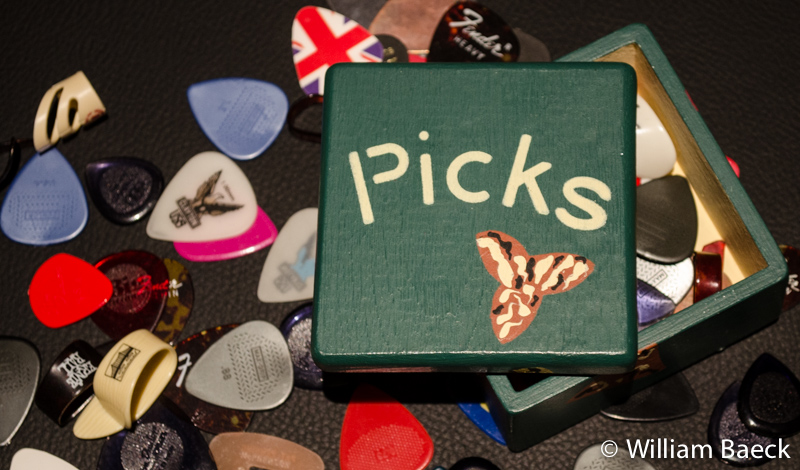The GAS Man: How to Upgrade Your Rig for 25 Cents

Here’s how the average guitarist’s brain functions in response to being unhappy with tone …
Problem: Weedy tone.
Guitarist’s brain says: “Buy a Les Paul.”
Problem: Wooly tone.
Guitarist’s brain says: “Buy a Strat. No—a Tele. No, wait … buy both. And a new amp, just in case.”
One simple problem. One $2,500 solution.
Neurologists understand the reason for this kind of thinking. The brain is seated directly behind the eyes, where it is easily stimulated by bright and shiny things. Simultaneously, the brain is a financially insensitive organ, precisely because it’s located at the point on the human body farthest from the wallet.
Get The Pick Newsletter
All the latest guitar news, interviews, lessons, reviews, deals and more, direct to your inbox!
This is science.
So let’s be financially sensitive and find the cheapest way to get better tone. I know, that doesn’t sound very rock and roll. It sounds like your dad complaining about the price of hamburger between naps on the Barcalounger.
But no one has to know except you and me. Just try a 25-cent experiment. Try a different guitar pick.
Even if you own half a dozen guitars, twice that many pedals and several amps, you probably use the same Fender Medium pick on each guitar, from acoustic to electric, whether you play folk or metal. That pick is a great, classic, middle-of-the-road, dad-approved choice. But music is about shaking things up, trying new things.*
So this time, buy a different pick instead of a different guitar. That little divided wooden box on the counter of every guitar store on the planet contains a potent selection of plectrums for changing your sound and even the playability of your instrument.
That’s because picks come in a variety of materials, from felt, to plastic, to wood, steel, and stone. They can be thick or thin, big or small, round or sharp, and all shapes in between.
And what a difference something as simple as a pick can make.
On my acoustic guitar I recently changed from playing solo with lots of airy open tunings to jamming with Cajun musicians who want me to play loud, chunky cowboy chords. My first time with them I was lost in the mix. The next day I did just what my guitarist brain suggested, and went to half a dozen music stores auditioning jumbo-bodied guitars.
They were great fun to explore, but something was still missing in my sound. It was too plinky, not up-front enough. Then I thought about the box full of dozens of different kinds of guitar picks I’ve bought over the years. After I got home I tried each kind to see the effect it might make.
In the end, I switched from my usual oversized, thin, pointy-tipped nylon pick to a very rounded, stubby, hard plastic one. The result was a big change in sound. Most obvious was the leap in volume. It was easily as different as switching from my OM to a dreadnought. The tone was rounder and more direct, without any accompanying “click” from the pick—an altogether smoother, even sound, great for pounding out straight four-to-the-bar and waltz rhythms.
The surprise was that it also affected my right-hand playing technique. No more having to carefully lift up the pick from one string and locate it onto the next. The stubbier pick just glided from string to string, letting me brush chords more easily and slide in bass runs here and there. A side benefit was that by being so smooth and producing more volume, I didn’t have to work as hard to get the sound out, saving wear and tear on my wrist—an important consideration after strumming unamplified for three hours non-stop in a noisy pub.
Give it a try. In fact, seeing how cheap picks are, give it lots of tries. And don’t worry, you can get a bright and shiny rock and roll one—and even carry it in your wallet, far from your brain.
*Legal Disclaimer: Fender Corporation makes absolutely amazing picks. And guitars and amps. You have the address I sent you guys, right?
William Baeck is a writer, photographer and hack guitarist living in London. You can check out his webpage at williambaeck.com and reach him on Facebook and Twitter.
"Upgrading from your entry-level acoustic opens the door to an entirely new world of tonewoods, body shapes, and brands": 6 signs it's time to upgrade from your first acoustic guitar
"I'm past my prime": 5 common excuses for not learning the guitar – and 5 body and mind-boosting reasons you should









